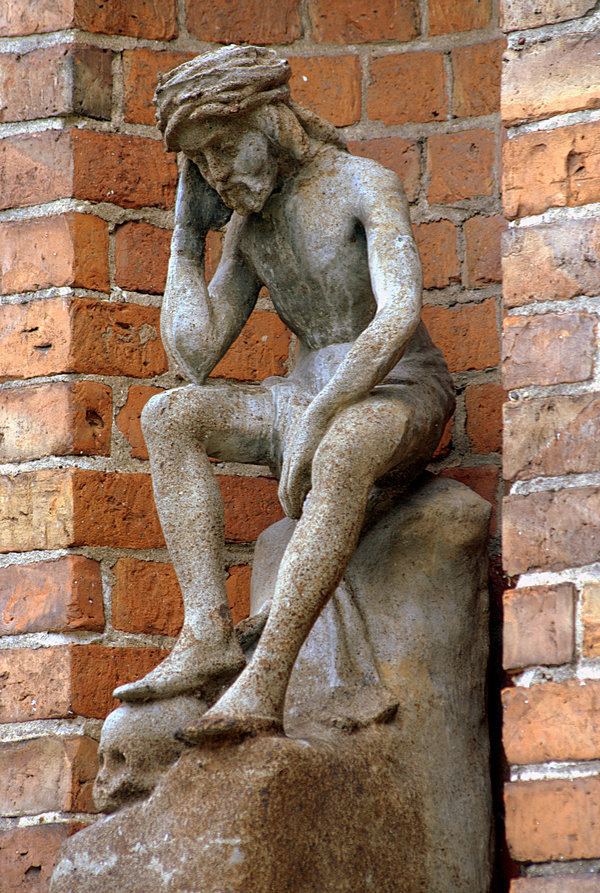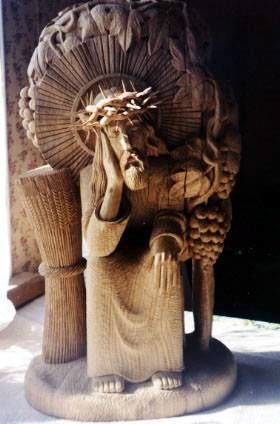 | ||
Similar Black Madonna of Często, Christ as the Suffering, Divine Mercy image, Lamentation of Christ, The Body of the Dead Christ in t | ||
The Pensive Christ or Christus im Elend ("Christ in Distress" in German) or Christus in der Rast or Chrystus Frasobliwy ("Christ Sorrowful" in Polish) is a subject in Christian iconography depicting a contemplating Jesus, sitting with his head supported by his hand with the Crown of Thorns and marks of his flagellation. It is therefore a picture of Jesus shortly before his crucifixion, although more an andachtsbild or devotional subject than intended to show an actual moment in the narrative of the Passion of Christ. The Pensive Christ is much more common in sculpture than in painting, where the similar Man of Sorrows is more often depicted (in this Jesus is shown with the wounds of the crucifixion).

Development of the image

Similar images are known from Neolithic sculptures in Europe, dating several thousand years before Christ. The first known depictions of the Pensive Christ occur in northern German sculptures from the latter half of the 14th century, taking a pose already found in paintings of the preparations for the crucifixion, where Jesus sits in thought as the soldiers work to raise the cross. Before this the pose had been used for the figure of Job in Distress, according to typology one of the prefigurements of Christ. Art historians link its appearance with the Devotio Moderna (Latin for "modern devotion"), which stressed the human nature of Jesus, a model for the faithful to follow. The image became especially popular in Silesia and Pomerania, and then Poland and Lithuania, where it became strongly entrenched in folk art wood carvings by dievdirbiai (Lithuanian folk carvers; example below).

A related image, the Herrgottsruh ("Repose of the Lord" in German), does not have the chin resting on a hand; Christ sits, often with hands crossed in his lap. This appeared in Italian painting at the end of the 14th century, and soon spread to sculpture in southern Germany and Austria.
The Thinker by Auguste Rodin has a similar pose, and may be based on the traditional sculptures.


